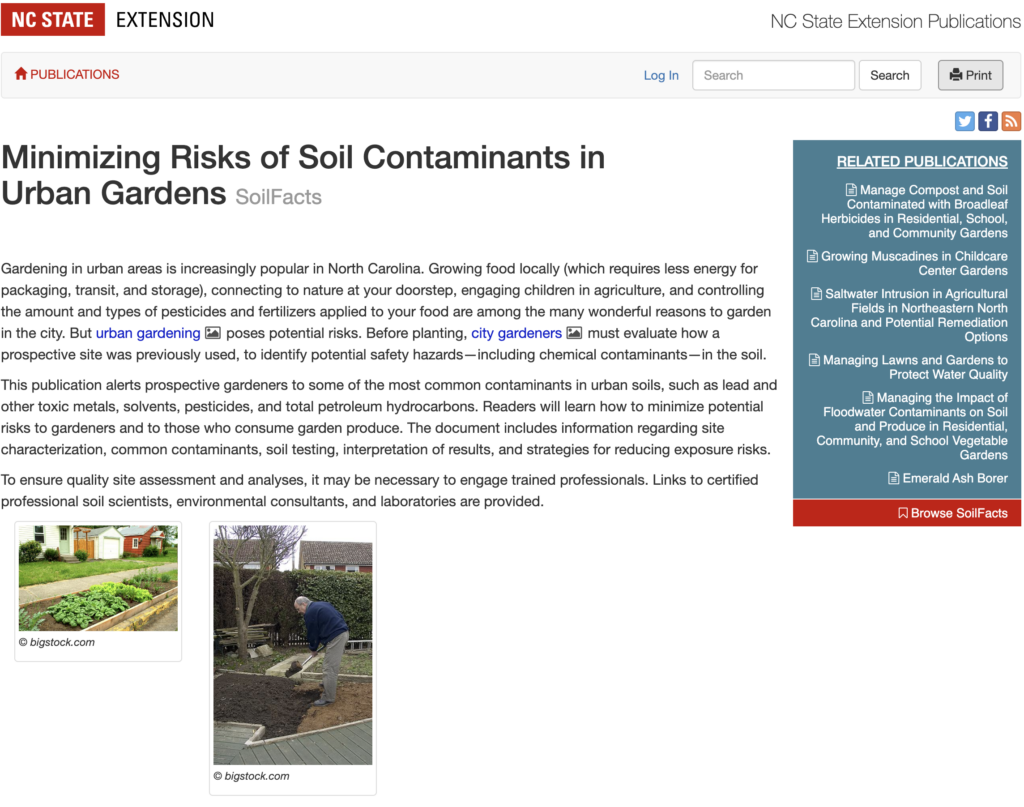Soil and Sediment Testing Post Flood
go.ncsu.edu/readext?1035435
en Español / em Português
El inglés es el idioma de control de esta página. En la medida en que haya algún conflicto entre la traducción al inglés y la traducción, el inglés prevalece.
Al hacer clic en el enlace de traducción se activa un servicio de traducción gratuito para convertir la página al español. Al igual que con cualquier traducción por Internet, la conversión no es sensible al contexto y puede que no traduzca el texto en su significado original. NC State Extension no garantiza la exactitud del texto traducido. Por favor, tenga en cuenta que algunas aplicaciones y/o servicios pueden no funcionar como se espera cuando se traducen.
Português
Inglês é o idioma de controle desta página. Na medida que haja algum conflito entre o texto original em Inglês e a tradução, o Inglês prevalece.
Ao clicar no link de tradução, um serviço gratuito de tradução será ativado para converter a página para o Português. Como em qualquer tradução pela internet, a conversão não é sensivel ao contexto e pode não ocorrer a tradução para o significado orginal. O serviço de Extensão da Carolina do Norte (NC State Extension) não garante a exatidão do texto traduzido. Por favor, observe que algumas funções ou serviços podem não funcionar como esperado após a tradução.
English
English is the controlling language of this page. To the extent there is any conflict between the English text and the translation, English controls.
Clicking on the translation link activates a free translation service to convert the page to Spanish. As with any Internet translation, the conversion is not context-sensitive and may not translate the text to its original meaning. NC State Extension does not guarantee the accuracy of the translated text. Please note that some applications and/or services may not function as expected when translated.
Collapse ▲Worried About Possible Soil Contaminates?
After floods gardeners may be concerned about soil contamination from sediments that may have settled in gardens. Unless you are near a a site that is known to be contaminated such as a factory or junkyard, your soil is probably ok. However, you can do soil tests to see if your soils carry contaminates. Contact our office for local companies that do these tests.
The following is an excerpt of the NC State publication Minimizing Risks of Soil Contaminants in Urban Gardens .
Some of the most common contaminants in urban soils, such as lead and other toxic metals, solvents, pesticides, and total petroleum hydrocarbons. Readers will learn how to minimize potential risks to gardeners and to those who consume garden produce.
Gardeners, garden visitors, neighbors, and animals (including pets, wildlife, and aquatic organisms) can each be exposed to soil contaminants in a variety of ways including:
- Eating soil (including soil adhering to fruits and vegetables)
- Breathing volatiles and dusts
- Absorbing contaminants through skin
- Eating fruits and vegetables that have absorbed contaminants
Specific exposure routes to contaminants in soils vary based on the particular contaminant, site characteristics, and management practices.
Special Concerns for Children
They love playing in the dirt and run a higher risk when soils are contaminated.
- When they put fingers, sticks, or even soil in their mouths, they directly consume more soil contaminants.
- Being closer to the ground means they inhale more dust and volatile compounds in the soil.
- Their bodies are rapidly growing and developing, so they have lower tolerances for many contaminants.
Do You Need To Worry?
Sites of special concern include those currently or formerly associated with land uses:
- Manufacturing and industrial sites, abandoned railroad lots, dry cleaners, and gas stations may have risks associated with chemical storage, leakage, and discharge into the environment.
- Landfills, junkyards, and waste disposal sites may have inorganic and organic contaminants that have leached into soils.
- Highway corridors, parking lots, or heavily trafficked areas are commonly associated with high lead levels from vehicle emissions.
- Household sites may have substantial lead deposits from older paints and plumbing fixtures.
- Former farmland may have built-up concentrations of inorganic and organic contaminants from fertilizers and pesticides due to excessive application or spills in storage and mixing areas. Otherwise, cropland acreage is generally immediately suitable for gardening applications.
Types of Soil Testing
- If there are no contaminant issues and soil sampling is for routine liming and soil fertility assessment only, North Carolina soil samples can be submitted to the NCDA&CS Agronomic Division laboratory for analysis and recommendations. This routine analysis includes copper and zinc, as they are also plant nutrients. The lab is capable of analyzing for other heavy metals but provides this service only to state-regulated sites.
- If inorganic contaminants are suspected, a typical analysis may also determine the levels of lead, zinc, mercury, cadmium, arsenic, barium, chromium, and selenium.
- If organic contaminants are suspected, analyses could determine levels of total petroleum hydrocarbons (TPH)—particularly polycyclic aromatic hydrocarbons (PAH)—solvents such as trichloroethylene and perchloroethylene (TCE, PCE/ PERC), pesticides (e.g. atrazine, carbaryl), dioxin, and bisphenol A (BPA).
Select and contact a soils lab ahead of time to identify fees and get specific directions on how samples should be collected and submitted.





